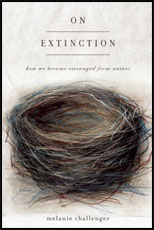" 'Let me tell you about Inuktitut words for "ice",' Meeka said, 'all the different stages of ice. They needed to be specific to the regions of Inuit, as ice behaves differently in different places.' There is aniksaq, large pieces of floating solid ice with no cracks, separated from the floe edge by strong currents or winds; apputainaq, the false ice of new cracks covered with snow; iniruvik, ice joints occurring along the thinner edge of what was the floe edge, continually opening and closing; kiviniq, the depression usually formed near shorelines by the weight of tidewater rising through cracks; nappakuit, ice only a few millimetres thick when broken by the forces of winds, currents or waves; siatuninik, pieces of ice moving as a group in the current; sikuliak, or newly formed ice with no snow on top, thinner than old ice, but safe to walk or travel on.
"She then fetched her computer and showed me a PowerPoint presentation designed for use in schools. The pages illustrated the Inuktitut words for the nine stages of a polar bear's life: a yearling, a three-year mother (which means the mother has two other young), and so on, none of which had an English equivalent. Next, she showed me the complex and variable methods by which the Inuit interpreted the seasons of the year: some were essential and yearly, and others surmounted the fluctuations of the years, allowing for aspects of a season to arrive at different times. She spoke of the knowledge packed into the economy of their words, how the word for 'wolf' in Inuktitut is aqalik, or 'one-who-carries-it-on-its-back', because the wolf bites its prey on the right side and throws it up on to its back between its shoulders. 'The English word "wolf" says nothing. It's just a name,' Meeka said. As more and more Inuit children spoke English as their preferred language or became bilingual, Inuktitut was losing some of its nuances. As the lives of this younger generation drew further from the landscape, the memories of the land captured in the utterances of Inuktitut dimmed.
"Our conversation was drawing to a close. I did not want to take much more of Meeka's time. Despite her steady, soft-spoken manner, I knew that she wanted to go to her dogs and feed them. But before I left, she told me about a sentiment she called 'yearning'. She drew this feeling for me. 'This is our yearning to return to a close association with the land.' She gazed at me unfalteringly. 'In the South,' she said, 'you see things . . .' and she drew a straight line along the table. 'Inuit see things . . .' and she drew a coil on the table. She pointed to a place at the beginning of the coil, and then to a place further along it, where her slender brown finger paused. The coil, she said, stood for all the generations' knowledge, and this yearning was a desire in the present to return to that place at the start of the coil, which stood for an experience or perhaps a place in the past. Yearning was the means for the past and present and future to amalgamate in a single sensation."
